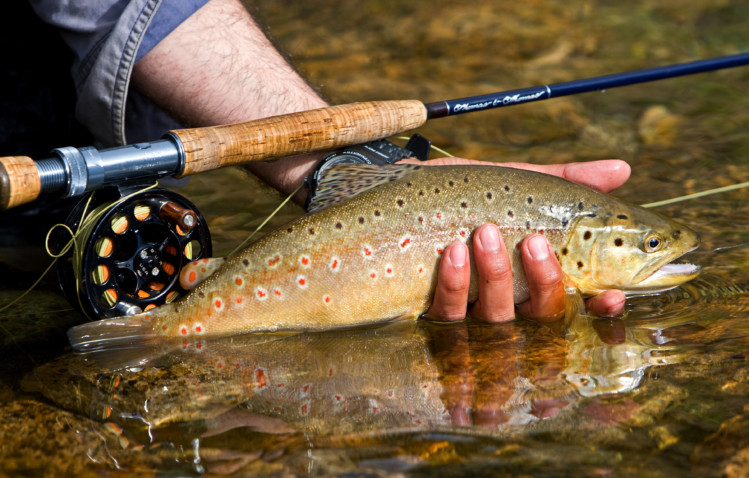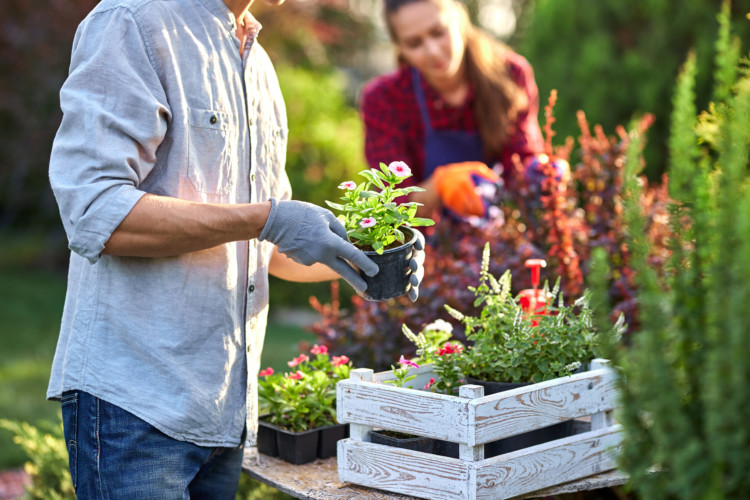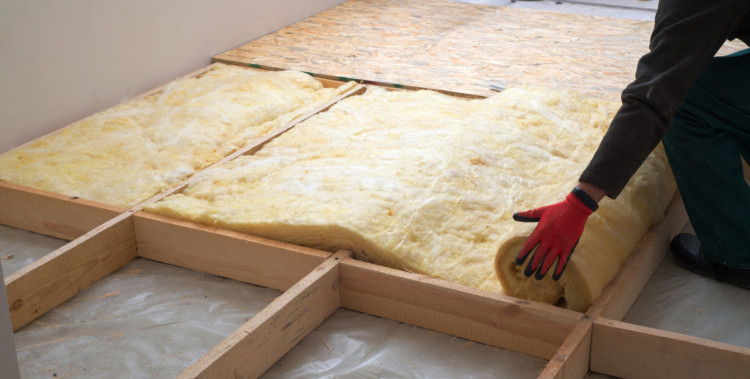Seller Profile: Denise Glickler
Sorry, no listings were found.
It’s Pascua Florida Day!

Happy Pascua Florida Day! That’s right. April 3 is Florida’s state holiday, commemorating the anniversary of the discovery of Florida in 1513 by Juan Ponce de León. Most people know him from his hunt for gold and the Fountain of Youth.
He named the land “Pascua Florida,” or “Flowery Land” after the Spanish Feast of the Flowers which is celebrated around Easter.
When Ponce de León arrived in Florida with about 200 men, the group was immediately attacked by Native Americans, and he was hit by an arrow. The group fled to Cuba, where de León died.
Eventually, Florida was settled by groups from Spain and France, then eventually Britain. They constantly fought over land with each other and with the native tribes. Even nature wasn’t good to them: hurricanes and famine hit them.
During this time, however, Florida became the site of one of the first communities of freed slaves, offering freedom to slaves fleeing from the colonies if they agreed to convert to Catholicism.
When Britain acquired Florida after signing the Treaty of Paris in 1763, the Seven Year’s War between Britain, France, and some of the tribes ended. Other native tribes, including the Seminoles, continued fighting into the mid-19th century, leading to the First, Second, and Third Seminole Wars and the creation of Fort King.
On March 3, 1845, Florida officially became a state…which is the same day that de León first arrived on its shores hundreds of years before.
There are many interesting things to know about Florida. Did you know:
- There are no dinosaur fossils in Florida. That’s because during the dinosaur age, the Florida peninsula was underwater, which means that compared to the rest of the Earth, Florida is new.
- Some may think Kansas or other states in the Midwest are the flattest in America, but they would be wrong! Florida’s mean elevation is only 100 feet. Its highest natural point is Britton Hill, which is only 345 feet above sea level.
- Sorry, California! Florida wins! Florida produces the most oranges in America. In fact, the state provides 75% of the country’s oranges and 40% of the world’s orange juice supply.
- About 1,000 people move to Florida every single day. That’s a lot of people, which is why your neighborhood might look like it’s always building new homes. Yet, until the middle of the 20th century, Florida was the southern state with the least population. How things change!
- Clearwater, Florida holds the record for highest rate of lightning strikes in the US. Shocking!
- Like to quench your thirst with Gatorade? It was developed at the University of Florida, named after the school’s mascot. And when you’re watching the games outside, don’t forget another Florida invention! Suntan lotion was invented in 1944 in Miami Beach.
- World Kudos! Key Largo, Florida, has gained recognition as the Dive Capitol of the World and Ocala has been recognized as the Horse Capital of the World!
Stretch It Out

The sun is shining…it’s time to get out and get fit!
Let’s start with a mantra that is sure to motivate: “No matter how slow you go, you’re lapping everyone on the couch.”
Now that we’ve done that, we’re ready to dive in and do the most heavy-weight exercise possible, right? WRONG!
It’s never a good idea to just jump in and exercise. You should stretch and get warmed up, first. Even if you’re not going to work out, it’s a great idea to stretch. It mentally prepares your mind for the workout and the day ahead. Studies have even shown that spending a few minutes stretching and doing mindful breathing every day reduces anxiety and stress and alleviates muscle tension.
Stretching can also help you physically, providing these benefits:
- Improved blood circulation
- More flexibility
- Better balance and posture
- Reduced risk of injury
- Relief from muscle tension and fatigue
So, how do you effectively and safely warm-up and stretch before a workout? The first thing to know: don’t rush it! Rushing can lead to pulled or strained muscles. You have to pay attention to your body, because ifyou overstretch you could put painful stress on your muscles.
Start with a little cardio and walk or bike for about five minutes in order to raise your body temperature. After you’ve finished and your heart rate has risen, you can roll your head in circles. Do a few shoulder shrugs. Then do a few rotations: arms, hips, and torso. Now you’re stretched and ready to exercise, right? WRONG!
Now you can begin your first real stretch.
Reach down slowly and go as far as you can in order to touch your toes. Don’t worry if you can’t yet…as you build flexibility, it’ll become easier.
Repeat this a couple of times, then you can do these stretches for each of your muscle groups:
LEGS:
- Hamstring Stretches: Stand with your feet shoulder width apart and slowly reach your hands down and try to touch your toes. Your knees should be slightly bent. Hold the stretch for a few seconds before releasing and repeating. You can also do the hurdler stretch. To do this, sit down on a mat and tuck one leg in. Extend the other leg out in front of you and reach toward your toes with both hands. Hold this position for 10 to 15 seconds before releasing and repeat with your other leg.
- IT Band Stretches: This tendon runs down the outer side of your thigh from your hip to knee. Sit down on a mat and extend your legs in front of you. Bend your left knee and cross it over your right leg. Turn your body towards the bent knee and look over your left shoulder. Hold for a few seconds then repeat with your other leg.
- Calf Stretches: Stand on something elevated, like a curb. Stand with your heels hanging off the edge and slowly do calf raises. Hold the movement when you feel the stretch.
- Quad Stretches: Place both feet on the ground. Balance on one foot, grab your other foot, and pull it towards your bottom. Your leg should be bent at the knee. If you need help to balance, you can use a wall.
HIPS:
This is best stretched with a runner’s lunge. Get into a high-plank position. To do this, start on all fours on the floor with your hands right under your shoulders and your knees bent under your hips. Step one leg back at a time until your position is similar to a push-up in the up position. Bring your left foot up and step into a deep lunge with your foot outside of your planted hand. Rock gently back and forth and do circular motions in this position. Bring your left back and repeat with the right.
ARMS:
- Biceps: Find a wall or pole. Place one hand against the wall and slowly turn away from the wall. Keep your arm flush to the wall if possible, but if you can’t, don’t worry about it. Adjust the placement to higher or lower to get different areas of your bicep.
- Triceps: Raise your arm above your head, bend it at the elbow, and gently push down using your other hand.
- Forearm: Extend one of your arms directly in front of you. Keep your arm straight and with the other hand, grab your fingers and gently pull back. Hold this for 20 to 30 seconds.
SHOULDER:
Extend one arm out and across the other side of your body. Grab the extended arm and pull it closer to your chest. When you feel the stretch, hold for 20 to 30 seconds then repeat with your other arm.
BACK:
There are three great stretches for the back we will review.
- Seated Spinal Twist: Sit down and place both legs in front of you. Tuck one leg in with a bend at the knee. Place your foot to the other side of the still extended leg. Twist at the spine using your arms to stabilize you. Repeat on the other side.
- Cat-Cow: This is easy to do. Get on all fours in a tabletop position. Look up and invert your spine pushing your belly to the ground. Next, tuck your chin and arch your back towards the ceiling. Rotate between these two movements while inhaling and exhaling.
- Backbend: Lay on your stomach with your legs extended behind you and plant your hands on the ground right below your shoulders. Your face should almost touch the mat or floor. Raise the top half of your body by extending your arms (like with a push-up.) Keep your legs extended and touching the mat. Slowly lower your top half to the mat and repeat for a few minutes.
One final note when exercising and stretching: remember to keep hydrated!
Spring Fishing in Homosassa

It’s spring and the sun is out sending sparkles on the water and the fresh, lively breezes are calling you to go fishing! We have the place: Homosassa!
WHAT TO FISH FOR
For untouched wildlife, stunning scenery, and not too many crowds you can head to Homosassa in the heart of Florida’s “Nature Coast.” Three rivers lead to the backcountry and flats, which go out to the bay and into the Gulf of Mexico.
There are plenty of fish you can catch here! Two of the Gulf’s most coveted inshore fish are redfish and spotted sea trout. An abundance of these can be found at the Homosassa, Crystal, and Chassahowitzka Rivers.
Redfish tail in the shallows and are wonderful to watch. They may put up a fight, but for the less experienced fisher, the trout aren’t far behind.
Catch and release fishers can enjoy aiming for snook and tarpon. There are few better places to find them than in Homosassa. In 2002, a 202lb Silver King was caught on the flyback! The spring is the time the tarpon come into the bay and rivers, and as the weather gets warmer, the snook will follow.
Other great fish you can find in Homosassa include snappers, groupers, cobia, and amberjack. You can even go hunting for scallops…yum!
HOW TO FISH
No matter how you choose to fish, there’s plenty to aim for, so it’s a matter of preference. You could sit on the shore with a cooler and ice bucket, relax and let the world pass by. You find the right spot, set up camp…you can even find some rocky outcroppings…and just enjoy your day with nature.
You could get into a kayak and head out on the calm inshore waters. This way, you get a little exercise, a lot of adventure, find that nook or cranny in the waterways, then aim for light tackle action. You can find some great fishing boats at https://villages4sale.com/list-cat/boats-for-sale/
Where you have saltwater, you usually can find a fishing pier, but Homosassa is not very developed that way. If you venture a few miles north, however, you come to Crystal River and there are at least five great fishing piers there! The trip is worth it.
Finally, there are the fishing charters. You work your way along the rivers and across the flats aboard a larger boat. All the equipment you need is provided, and there are even scalloping charters that might provide you snorkeling gear. Bring your swimsuits to join the manatees and enjoy the experience!
WHERE TO FISH
- The Chassahowitzka River: These waters may be brackish, but they are productive year-round. When the Gulf gets too cold, it becomes a haven for the saltwater fish.
- The Homosassa River: Year round fishing, but best in spring and summer when record-sized tarpon and snook are there…and a sprinkling of scallops.
- Roger Goettelman Memorial Fishing Pier: This is the largest fishing pier in Crystal River.
- Saint Martins Keys: Turn north when you hit the bay and you can find the redfish at their finest. While best in the summer, they are there all year.
- Black Rock Hole: This is the number one tarpon fishing spot in Homosassa, where that silver king was found.
Spring Gardening Time!

Spring is almost here and it’s time to think about your garden! You’ve been cooped up all winter, and now all you want is to surround yourself with bright colors: greens, reds, yellows, blues…it’s time to glow and grow!
Here’s a basic guide for what you should plan to do this spring in your yard:
SPRING INSPECTION
Check your garden for winter damage. While we’re in Florida, we don’t have to worry about snow damage, but there’s always other elements that can affect our yard. Have any boughs broken off in storms? Is the mulch in good shape? You want to replant shrubs that might have been pushed up. Try not to walk on muddy areas as footsteps compact the soil.
You want to look at the hardscaping items as well. What is hardscaping? This is anything in your landscape that is inanimate. Your retaining walls, pavers, outdoor kitchens, decks, driveways…things like that. Check all of these for rot or other forms of damage. This would be a great time to toss new mulch in the beds, give that fence a fresh coat of paint.
START THE SEEDS
Start the seeds of vegetables and annuals indoors 6-8 weeks before you plan to plant them. It’s a great idea to get a calendar and make a planting schedule so that seedlings mature at the right time for your area.
PRUNE SHRUBS AND VINES
This is the time. Remove dead branches and shape plants once new growth appears. Hold off on pruning spring bloomers until after they flower.
PREPARE ORNAMENTAL BEDS
Starting with areas where spring blooming bulbs are peeking out of the ground to enhance your color displays. Don’t forget to rake out surface debris and cut back on your perennials and ornamental grasses. It’s best to do this before the new growth appears. Pour on several inches of compost or manure which will add slow-release nutrients, suppress weeds, and conserve water.
DIVIDE PERENNIALS
When the new growth comes, it’s time to split. Transfer extra clumps into bare spots or give them away.
EDIBLE PLANTING
Remove surface debris such as leaves or mulch from vegetable beds. This helps warm the soil. You want to avoid compaction, so wait until the soil has dried out before tilling. If the soil crumbles when you try to make a ball it’s time to work the beds. Add compost, manure, and trace mineral sbefore planting early crops of lettuce, radishes, kale, peas, and onions. You might want to protect young plants from late frosts with a cloche or cold frame.
ADD COLOR
You want to place early season annuals around bulbs or in containers for extra color. This is when you’ll plant summer bulbs, so these will keep the bed colorful until they grow. Wait until all danger of frost has passed before you plant petunias and marigolds.
REJUVENATE WATER FEATURES
Make sure that fountain is clean, the filter is replaced. Turn on pumps and ensure the water is circulating. For natural water gardens like ponds, you can add beneficial plants or apply other algae control methods.
ENCOURAGE THE BIRDS
Birds and other wildlife are amazing at controlling pests. They balance the ecosystem and are just plan fun to watch. Add nesting boxes to attract different birds. Give consistent, clean water to encourage them. Plant natives that offer nectar, seeds, and berries and make sure they have trees and hedging for nesting and shelter.
The Wearing of the Green

St. Patrick’s Day is approaching and people all around the world are picking out their green clothing, preparing to dye their beer green, and are whistling old Irish tunes…but do you know what the traditions of St. Patrick’s Day represent? Here’s the story behind the symbols:
PATRICK AND THE SNAKES
St. Patrick lived in the fifth century and is the patron saint of Ireland and its national apostle. He was born in Roman Britain and then kidnapped and brought to Ireland as a slave when he was 16 years old. It is said he banished the snakes from Ireland and brought Christianity to the island.
The legend of him banishing the snakes isn’t very likely, however. The island nation was never home to any snakes. The concept of “banishing the snakes” is most likely a metaphor for the eradication of pagan ideology from Ireland and the fact that within 200 years of his arrival, Ireland was completely Christianized.
GREEN
Did you know that if you don’t wear green on St. Patrick’s Day, leprechauns can see you and then they might pinch you? That said, the color first associated with the day was not green. St. Patrick was associated with the color blue, but in the 17th century that began to change, because green is one of the colors of Ireland’s tri-color flag. This has continued on to the “Emerald Isle,” and the lush green landscapes of Ireland, the color of spring, and even the shamrock.
THE LEPRECHAUN
These tiny gold-loving fairies were originally called “lobaircin,” which means “small-bodied fellow.” The belief is that they would use their magical powers to serve good or evil. In Celtic folktales, they were cranky and responsible for mending the shoes of other fairies. They were known for their trickery, which they used to protect their pots of gold. In Ireland, they have their own holiday on May 13th, but they do love to come out and party on St. Patrick’s Day!
CORNED BEEF or IRISH BACON
While cabbage was a staple of the Irish diet, Corned Beef was not. They would traditionally eat the cabbage with Irish bacon, but when Irish immigrants came to America they couldn’t afford that, so they substituted it with corned beef…a cheaper alternative they picked up from Jewish immigrants.
SHAMROCK
The shamrock, also called the “seamroy” was a sacred plant in ancient Ireland. It symbolized the rebirth of spring. Later, as the English began to seize Irish land, the Irish protested the laws against use of their language and practice of their religion by wearing the shamrock as a symbol of pride in their heritage.
IRISH MUSIC
After the English conquered the irish and forbade the use of their language, the Irish turned to music to help them remember important events and cling to their heritage. It also stirred emotion and galvanized people, so the English monarchy, including Queen Elizabeth I, outlawed the music…even so far as decreeing that all artists and pipers were to be hanged on the spot. That said, music has always been a staple of Celtic culture, where religion, legend, and history have been passed on through stories and songs. Today, the music has worldwide popularity, with groups like the Chieftains, Clancy Brothers, and even the Pogues having made the style popular. They might use the fiddle, the uilleann pipes (which is an elaborate bagpipe,) a tin whistle (usually made of nickel-silver, brass, or aluminum,) the ocarina (which is often made of clay,) and the bodhran, which is an ancient type of frame drum which was used in warfare.
Valentine’s Day At Home – Food Fun

Staying in for Valentine’s Day can be the best thing going! All you need to do is set the mood, set the food, and all is good! Sometimes, the intimacy of staying in can be the most romantic thing you can do. Who needs the noise and crowds of multitudes of other couples also trying to do the “Valentine’s Day” thing? The chance that you might meet friends who might distract you from the one you love?
Stay in, and make a super supper! Set the mood by setting the table, adding candles, a great playlist of romantic music, and let romance and love do the rest!
You can find many recipes online, but here’s a great easy to make gourmet Valentine’s menu:
APPETIZER – Shredded Brussel Sprouts and Ricotta Toast
Prep Time: 45 minutes
Cook Time: 10 minutes
Total Time: 55 minutes
INGREDIENTS
- 30 (1/2″) slices baguette or rustic country-style bread, or 15 slices Pullman bread, cut in half diagonally
- 1/2 cup olive oil, divided
- 1/4 cup golden raisins
- 1/4 cup pine nuts
- 1 medium shallot, finely chopped
- 1 tablespoon finely grated lemon zest (from 1 lemon)
- 3 tablespoons fresh lemon juice
- 2 teaspoons honey
- 1 1/2 teaspoons Dijon mustard
- 1 teaspoon kosher salt
- 1/4 teaspoon freshly ground black pepper, plus more
- 1 pound brussel sprouts, trimmed, halved lengthwise through root
- 2 cups high-quality whole-milk ricotta
- Flaky sea salt
PREPARATION
-
- Arrange racks in upper and lower thirds of oven; preheat to 375°F. Arrange bread on 2 rimmed baking sheets and brush with 1/4 cup oil. Toast until lightly browned, 8–10 minutes.
- Cover raisins with very hot water in a small bowl and let sit until ready to use, at least 5 minutes.
- Heat a medium skillet over medium-high. Toast pine nuts, stirring often, until browned, 4–6 minutes. Transfer to a small plate; let cool.
- Whisk shallot, lemon juice, honey, mustard, kosher salt, and 1/4 tsp. pepper in a large bowl. While whisking, stream in remaining 1/4 cup oil.
- Thinly slice Brussels sprouts with a sharp knife or shred with shredding blade of a food processor. Transfer to bowl with dressing and stir in raisins. Toss to coat and let sit 15 minutes.
- Spread toasts with ricotta (about 1 Tbsp. each). Fold pine nuts into Brussels sprout mixture just before serving and divide among toasts. Top with lemon zest, pepper, and sea salt.
MAIN COURSE – Chicken, Mushrooms and Squash with Lemon Cream over Orzo
Prep Time: 10 minutes
Cook Time: 15 minutes
Total Time: 25 minutes
INGREDIENTS
- 4-5 boneless chicken thighs
- 3-4 cups of white mushrooms – washed, stem removed, and sliced
- 2 medium squash – washed and either julienned, long thin strips, or chopped
- 1 small shallot – finely chopped
- 1 lb orzo
- 1 cup heavy cream
- 1 lemon
- chopped chives for garnish
- seasoning – salt, pepper, paprika
PREPARATION
- Start by prepping mushrooms, squash and shallots per ingredient list, set aside.
- Boil water for pasta per box directions. Season the water with salt (3-4 pinches) (Add 1 lb of orzo once water comes to a boil. Cook per package instructions, remove, drain and rinse with cold water to stop the cooking – set aside)
- While water is coming up to boil, Season chicken with salt, pepper and paprika – light coat of each on both sides. Note: go light on the paprika
- Add 1-2 teaspoons of canola or vegetable oil to heavy skillet (preferably cast-iron) for 5 minutes on medium heat. Watch closely, once oil starts to lightly smoke you are ready to add chicken
- Carefully add seasoned chicken to skillet (be careful as oil may splatter)
- Cook chicken approximately 4-5 minutes per side until well browned. Given stovetop temps will vary, check every 2 minutes to ensure chicken is not burning. If you have food thermometer, cook until internal temp reaches 185
- Remove chicken from skillet
- Add Shallots, Mushrooms and Squash to skillet. Season lightly with salt and pepper and stir to coat with oil. Stir fry for 4-5 minutes until squash is tender. Taste and add salt if needed.
- Remove vegetables from skillet and lower heat to medium low
- Add heavy cream, juice from half a lemon, pinch of salt and pepper. Stir heavy cream frequently for 5-7 minutes until sauce thickens (stir frequently to keep it from burning, cook until sauce thickens). Taste and add salt, pepper, lemon juice if needed
- Add orzo to a bowl and add ¾ of the heavy cream and stir.
- Plate Orzo and top with desired amount of vegetables
- Top with chicken pieces and add sauce to chicken
- Top chicken and sauce with chopped chives as a garnish
DESSERT – Berry and Pound Cake Trifle
Prep Time: 5 minutes
Cook Time: 0 minutes
Total Time: 5 minutes
INGREDIENTS
- 2 cups of raspberries – washed
- 2 cups of blueberries – washed
- 2 cups of strawberries – washed and sliced
- 1 pound cake (you can pre-buy this or find a recipe)
- vanilla pudding
- Cool Whip
- 1 lemon
- sugar
- fresh mint for garnish
PREPARATION
- Trifle will be constructed with alternating layers of Pound Cake, Berries, Pudding and Whipped Cream. Use your judgment on how much to add for each layer, ideally thickness should allow for 2 complete layers of each to top the cup.
- Start by tossing berries with 1-2 teaspoons of sugar and juice from half a lemon. Let sit for 10 minutes, taste, and add sugar/lemon to desired taste
- Crumble pound cake and layer in bottom of glass
- Add layer of berries
- Top with layer pudding then whipped cream
- Repeat layers – pound cake, berries, pudding
- Topped with whipped cream and garnish with a few berries and fresh mint
Staffing Services and How They Work

With the economy falling on hard times in the last few years, many individuals have been pushed back into the job market after a long hiatus. The unfamiliarity of trying to find a job has left many feeling lost. Staffing services help bridge the gap between employers needing to meet company goals and qualified workers looking for employment.
A staffing agency can help you find the right job.
Apply to Several Jobs at Once
Staffing agencies help people who are searching for a job. It starts with employers listing jobs with the agency. Since the agency has already received applications, it looks for qualified applicants. If the agency thinks you are a match, it will have an initial meeting to interview you and give a skills or aptitude test to further determine your abilities. For positions requiring specific skills, agencies may advertise in the classifieds to find new applicants.
Early on, it will be necessary for you to consider their availability and willingness to relocate or work at home. A local agency can also help job seekers relocate to the area by helping them find a job before they move.
Assistance to Find the Right Job
A representative from the staffing agency will often work directly with you. Following the initial interview session, the agent will look for openings that fit your resume and experience. Whether it’s a specific opening or a recurring position, when the agent finds a match, they recommend you to the employer.
Once the staffing agency has made a choice on a candidate for a specific position, the candidate will then go on to interview directly with the employer. Pending the outcome of the interview, the employer will either directly hire someone or take them on a temporary basis.
Temp Work Can Be Long Term
As a temporary employee, you will work for the staffing agency, perhaps for more than one employer. The employers pay the agency and the agency pays you. In most cases, a temp position is project related and lasts a set amount of time. This is common for construction or manufacturing projects that need extra hands. However, secretarial positions can continue past the set time frame. If you are the great worker, you may be hired to a full time position.
Does Your Pet Get Enough Attention?

Deciding to buy or adopt a pet brings with it certain responsibilities, not unlike having a child. You should choose a pet that will match the amount of attention and time you have available to give it. Luckily, different pets have different needs and you have a wide choice.
Dogs
Dogs are very sociable animals and need to live in a pack. Leaving a dog on its own for long periods of time will result in behavioral problems such as destructive behavior, howling/whining, dominant behavior or excessive urination.
Many dogs are returned to dog pounds or kicked out of the house because they have chewed shoes, carpets, doors; or they have started to bark excessively or whine; or perhaps they urinate indoors even though they are housebroken. All these problems can usually be solved by a change in the owner’s behavior.
Take time to exercise and groom your dog. Engage with him at feeding time. This will reinforce your position as pack leader and he will grow to respect you.
Cats
Although cats do not need to be exercised like dogs, they still need your love and attention. Cats like to be stroked each day and will love to hear the sound of your voice as you potter around with them by your side. They like to sit at your feet or in your lap while you read or watch TV.
Grooming is very important is long-haired cats. Many cats end up with skin infections or painful matting because the owner failed to take into account the grooming time needed.
Birds
Birds too need different degrees of attention. Some birds, like canaries, want very little attention, but other breeds such as parrots need a lot if interaction to be happy. Some breeds of parrots will mimic your voice and words. They will listen intently when you speak close to them and will come to you if you reward them with treats such as nuts or seeds.
Reptiles
While not known as affectionate creatures, if you plan on keeping reptiles it is a good idea to get them used to human handling during feeding and cleaning time. The only way to familiarize them with the human touch is to do so often. You will also find that handling your pet will be more enriching as an experience, always within the limits of safety.
Well-Meant Casual Promises of the New Year
 Hey! It’s New Year’s Day! First day of the new year, first day to make things better, first day to embark upon those well-meant casual promises you made to yourself that you’re under no legal obligation to fulfill!
Hey! It’s New Year’s Day! First day of the new year, first day to make things better, first day to embark upon those well-meant casual promises you made to yourself that you’re under no legal obligation to fulfill!
But where did the tradition of setting New Year’s Resolutions come from? How did it all start?
It is said that the ancient Babylonians were the ones who started this tradition. While this was in mid-March, when the crops were being planted, they celebrated a festival called Akitu. This is when they made promises to pay their debts and return objects they borrowed at the same time they crowned a new king or reaffirmed their loyalty to the reigning king.
After Julius Caesar changed the calendar and set January 1st as the beginning of the new year, the Romans joined that practice. January is named for Janus, the two-faced god whose spirit inhabited doorways and arches. They believed he looked both back into the previous year and forward into the next…so they made promises to this deity of good conduct.
Early Christians made the first day of the new year the traditional occasion for thinking about past mistakes and resolving to do better in the future. In 1740, the English clergyman John Wesley, who founded the Methodist church, created a service for this: the Covenant Renewal Service.
Yet, despite the religious roots of New Year’s resolutions, it’s now mostly a secular practice. Instead of promising to do better to the gods, we’re promising ourselves. We usually focus on self-improvement – which might be why it’s hard to follow through on them. Did you know that as many as 54 percent of Americans make resolutions, but only 8 percent of us actually manage to achieve those goals? Don’t feel bad when you don’t fulfill that well-meant promise! We’re with you! Some of us have even adjusted our resolutions to be more attainable:
- Lose weight or my temper. Whichever comes first.
- Stop procrastinating. Starting tomorrow.
- Get in shape. I choose round.
- Stop drinking orange juice after I’ve brushed my teeth.
- Lose weight by hiding it somewhere I’ll never find.
- Lower my bills by digging a hole to put them in.
How to Buy a Used Motorcycle
 Starting a search for a motorcycle is an exciting experience. Before you get carried away, however, think about your level of experience and also how you would like to use the motorcycle. Thinking ahead will ensure you get the right bike for you. Are you looking for a racer, a cruiser or a sports bike? Do you want to ride the bike off-road, drive it to work, or go on a weekend poker run?
Starting a search for a motorcycle is an exciting experience. Before you get carried away, however, think about your level of experience and also how you would like to use the motorcycle. Thinking ahead will ensure you get the right bike for you. Are you looking for a racer, a cruiser or a sports bike? Do you want to ride the bike off-road, drive it to work, or go on a weekend poker run?
Research Motorcycle Prices
How do you get the best deal on a used motorcycle?
Prices can be researched through the classifieds. For instance, check out Motorcycles for sale in Lake City, Florida or Gainesville motorcycles on our classified sites. This will give you an idea of market price and what you can buy with your budget. Researching prices will mean you understand the value and condition of you bike. This knowledge will help you avoid buying too cheap under the impression that you have made a good deal, only to find your bike needs more work than you expected.
Check the Owner History
A motorcycle’s history can be checked at CycleVIN.com . You can find out if it has been in an accident, if it has been stolen or scrapped, how many owners it has had, and the year of registration plus make and model amongst other information. Make sure the paperwork matches the seller’s claims.
Check the Bike:
- Start the bike.
- Look for signs of an accident or severe rust. Does the bike look cared for?
- Drive the bike and try several maneuvers.
- Test the fork and the brakes.
- Look at the tire tread.
- Check for leaks and the quality of the exhaust fumes.
- Check the chain and that the handlebars move smoothly
If possible, have the bike checked by your mechanic. Although could be an added cost, it can be worth it. To ensure a pleasant riding experience, make sure you have the right safety gear. Never try to save money when buying gear that could save your life.
Make Time for Manatees!
 Winter is the best time to go to see the Manatees in Florida’s warmer waters. These creatures, known both as “Gentle Giants” and “Sea Cows” are very sensitive to cold temperatures, so they migrate in winter and early spring…giving us the perfect chance to meet these 1,000 to 3,500 pound creatures along Florida’s grass flats and aquatic meadows.
Winter is the best time to go to see the Manatees in Florida’s warmer waters. These creatures, known both as “Gentle Giants” and “Sea Cows” are very sensitive to cold temperatures, so they migrate in winter and early spring…giving us the perfect chance to meet these 1,000 to 3,500 pound creatures along Florida’s grass flats and aquatic meadows.
You can marvel at them from a platform viewing deck or even go swimming, snorkeling, or kayaking near them. The question is: Where?
And here’s the answer: five great places to spend time with these magnificent manatees.
Three Sisters Springs, Crystal River
This is the largest winter refuge for manatees on the Gulf Coast. While they can be found year round in Kings Bay, the area receives extra protections in winter months, so you can view them from the boardwalk vantage point. From April to November, however, visitors can swim, kayak, and canoe with manatees on scheduled tours. This location boasts crystalline blue waters the make viewing these manatees gliding below the surface ideal.
Blue Spring State Park, Orange City
This area covers more than 2,600 acres. Located between Sanford and Deland, visitors can come from November to March to see the West Indian manatees from the overlooks. There’ a half-mile boardwalk that runs along the Blue Spring Run where you can watch them and there are displays that provide history and education about the wildlife and ecological wonders of the area.
Lee County Manatee Park, Fort Meyers
From November to March the manatees come to this park for its warm waters. This is a protected sanctuary with an observation platform and landscaped park that spans 17 acres. It’s the perfect for a day out with the entire family. The waters are shallow, so visitors have plenty of unique opportunities to see the animals up close at this non-captive natural environment. The park also has many guided walks and educational activities, including a beautiful butterfly garden and a variety of picnic facilities.
Manatee Lagoon, An FPL Eco-Discovery Center, West Palm Beach
This beach has seen up to 800 manatees during a cold snap. There are two levels of exhibit and observation areas for viewing these manatees up close, where a 16,000 foot center features hands-on displays to learn about manatees and the eco-system around Lake Worth Lagoon. They also have guided walking tours of the exhibits.
Manatee Viewing Center, Tampa Electric, Apollo Beach
This is a designated manatee sanctuary where plenty of these gentle giants relax in the warm waters from November to April. Here, visitors can observe them in their natural habitat and there’s an education center where visitors can learn about them. This is a 50-acre facility, so you can take a break to see them swim through the Tampa Bay saltwater from atop the 50-foot viewing tower. There’s also a mangrove exhibit, butterfly garden, and gift shop.
But what about swimming with the manatees?
Crystal River has several companies which offer small, semi-private, and private manatee snorkeling tours. These are conducted from a boat and provide the snorkeling gear and the wetsuit, but of course, you can bring your own. They provide you an in-water guide who is with you from arrival to departure. These companies respect the ecosystem and avoid putting undue stress on the manatees and their habitat, so groups are kept small and you begin with educational videos, teaching you what you are allowed to do on your tour.
What NOT to Wear at an Interview
 First impressions are important. The decision to hire an applicant can be made in the first few seconds of meeting you. You will be judged by your appearance to determine if you are neat, concerned with details, understated or dramatic. An employer will even look at your clothing to determine if you understand the type of work you will be doing.
First impressions are important. The decision to hire an applicant can be made in the first few seconds of meeting you. You will be judged by your appearance to determine if you are neat, concerned with details, understated or dramatic. An employer will even look at your clothing to determine if you understand the type of work you will be doing.
Rule #1: Dress the Part
The most important thing is to dress the part. Imagine you are going to a casting call for movie extras. And whether they pick you for a role is based on how good your costume is. If the scene is set in the winter, you wouldn’t show up in shorts.
You should look like everyone else who already works there. However, you should not look like everyone else who is applying. What you want to show your future employer that you already “fit.” Dress as though they will hire you on the spot as long as you don’t have to go home to change.
Shorts and Flip Flops
Unless you are applying to be a lifeguard or summer camp counselor, shorts are out. Pants should be clean with no rips. If the company uniform is khaki pants, that’s what you wear. For ladies, skirts should be a comfortable length, pretty close to the knee, with no tugging required.
Shoes should be comfortable and meet any OSHA guidelines for the job. Does this factory floor require non-slip or steel toes? You should know that and dress accordingly.
Tight Fitting Clothes
Find a shirt that fits. You are about to be asked tons of questions about your work ethic and job experience. Do you really want to think all that up while holding your breath? Comfortable clothes give comfortable answers. So put away the guns, Muscle Man.
Hats
Look around the job site. Does everyone have their own hard hat? So should you. The rest of the crew is wearing hair nets? Where is yours? All the other truckers have hats? Get one fast!
At most jobs, no one wears a hat. Neither should you. A hat says you have something to hide — hat head, baldness, or white hair with green streaks. Be honest about who you are by removing the hat. Hair style should be well-kept and boring, unless you are applying to a hair salon.
Gobs of Make Up and Suffocating Perfume
Light and natural are the way to go. Don’t “cake on” the make up or “stink up” the office. Strong perfumes, aftershave or colognes often give hiring managers headaches. You don’t want the interviewer to remember you as “the one that gave me the asthma attack.”
Cell Phones and Accessories
Leave the cell phone in the car. The interviewer is taking time away from their job responsibilities. Do not interrupt your time with them to answer calls or glance at TXTs.
Purses should be small and understated. Portfolios and briefcases should be easily operated.
Never chew gum. Instead, chew up a mint just before arrival. Don’t carry a rattling container of them.
Noisy jewelry, lots of piercings, and colorful tattoos distract employers from why you are the best applicant. Reduce these distractions and help them see the real you.
Ho Ho Holidays: Little Known Holiday Traditions
 ‘Tis the season for celebrating, and we’re pulling out our tinsel and plastic Santas. The lights adorn our houses, or in some cases, a menorah is placed in the window, ready for December 10th to come around for the first night of Chanukah.
‘Tis the season for celebrating, and we’re pulling out our tinsel and plastic Santas. The lights adorn our houses, or in some cases, a menorah is placed in the window, ready for December 10th to come around for the first night of Chanukah.
We’re saying “Merry Christmas,” or “Happy Chanukah,” or “Happy Holidays,” or “Season’s Greetings” and almost every radio station has been taken over with Christmas Carols.
We’re in the mood for giving, for loving, for peace on Earth and goodwill towards man.
What are some traditions for these holidays? Let’s take a peek:
One of the common threads in the Jewish tradition of Chanukah is eating fried foods. Because many of the countries on our tour involve the food, let’s start by explaining why fried foods are important.
Chanukah is the “Festival of Lights.” It is a celebration of freedom of religion, where the Jewish people, having been pushed out of their homes and temples by a polytheistic King who tried to get them to worship him, refused. They took to the mountains and hid. Eventually, they formed a rebellion, won their lands and temple back, and began the recovery. In the temple there is an Eternal Flame. It is said that when the flame goes out, the Temple in Jerusalem will fall…so it’s important to keep it lit. Sadly, when they began their recovery, they discovered only enough oil to last for one day. They used this oil to light the flame and began preparing more oil, but they knew it took eight days for this to be ready. A miracle happened though, and the oil kept the flame lit for eight days! This is why Jewish people across the world eat fried foods on Chanukah.
And now, our tour begins in South America.
Jewish people in Columbia have added a new fried food to their menu: Patacones, which is plantain slices fried in oil.
Meanwhile, Christians celebrating Christmas have a few unusual traditions. In Venezuela, for example, roads are closed to let people roller skate to early morning Christmas Mass. On their way, skaters will tug on the ends of long pieces of string tied by children to their big toes and dangled out of windows. Why was this tradition begun? Nobody knows…but guesses are that it is the tropical Venezuela’s alternative to sledding.
Mexicans perform the “posadas” which is a series of nine processions to re-enact the part of the Christmas story where Joseph and Mary go in search of somewhere to stay. This ends in a Church service with food, games, and fireworks.
Moving our tour on to Africa, we come to Yemen and North Africa, where the seventh day of Chanukah is all about celebrating the heroines of the story. These communities mark this with Chag Ha’Banot, the Daughter’s Festival and celebrate Hannah and Judith, who fought against the oppression from the Assyrians. In Morocco, Jewish people also have a “Sfenj,” which is a fried jelly donut with juice and the zest of an orange.
Meanwhile, in South Africa, Christians enjoy their “tasty” Christmas treats of emperor moth caterpillars that are either sun-dried or deep fried. They say the bugs have a similar flavor to tea.
Continuing on to the Middle East, we have a few interesting traditions. In Israel, sufagniyot, round jelly donuts fried in oil, are enjoyed and menorah lights are burned and displayed for all to see them burning. In Istanbul, Turkey, Jewish people often sing a song in honor of the eight candles called “Ocho Candelas” and munch on fritters known as “burmelos.”
In Syria, Christians have its own local legend about the Nativity. Christmas presents are delivered, not by Father Christmas, but by the youngest of the camels that carried the three wise men to Bethlehem. Instead of a carrot for Rudolph, children leave water and hay outside their homes for this hard-working camel, and the load comes on New Year’s Eve instead of Christmas Eve.
Popping over to the Mediterranean, we can visit Jewish households chowing down on Precipizi, which is a fried pastry that involves a lightly sweetened, olive oil infused honey-covered treat.
Portugal’s Christian children eat a meal called a Consoada in the early hours of Christmas Day. They set extra places for “alminhas a penar…” the souls of the dead. Some believe that this is in hopes that the dead will provide a bountiful harvest.
There are many, many more Holiday traditions: Indian Jews dip wicks in coconut oil to light their menorahs, while Christian children there have Christmas banana trees or mango trees to light up instead of the Pine trees they lack.
Christmas brings more fun and funny traditions as well: In the Czech Republic, single Czech women stand with their backs to the front door on Christmas Eve and remove a shoe. They hurl it over their shoulder towards the door and how it lands predicts their romantic prospects for a year. If the toe faces the door, the thrower is destined to marry…sadly, the heel to the door is the opposite.
Whatever way you celebrate, and whichever holidays you observe, we wish you all an amazing Holiday Season!
4 Thngs You Need to Know Before Attending a Self-Storage Auction
 Self storage auctions can be a good place to make some easy money once you have some practice under your belt. These auctions take place when the person renting the storage space has not kept up payments to the property manager. After trying to obtain payment and informing the owner that they are to lose their property, the manager has the right to sell the stored property to recoup the missed payments.
Self storage auctions can be a good place to make some easy money once you have some practice under your belt. These auctions take place when the person renting the storage space has not kept up payments to the property manager. After trying to obtain payment and informing the owner that they are to lose their property, the manager has the right to sell the stored property to recoup the missed payments.
People looking to make a quick dollar are turning up in droves at self-storage auctions, prompting two reality shows based on the theme. Many buyers resell the items in the classifieds or at garage sales, with large profits to be made if the items are in demand and valuable. The best way to hear about the next self-storage auctions near you is to contact the storage facility.
Auction houses and individuals bid side by side for items they sometimes have not even seen. This is because the property manager will raise the door to the unit and bidders must bid on what they see, though sometimes everything is in boxes. No-one is allowed to touch anything or go inside the unit.
Self-storage Auction Tips
- You are only given 24 hours to clear the unit so it’s a good idea to turn up with a truck on the day. So if you win a large lot, you want to make sure that you get a head start and can clear it out in time.
- Cash is the best way to pay, not everyone will accept checks or cards.
- A good strategy is important. Be careful of getting caught up in the excitement of bidding, only to win a lot that is not going to make you much profit.
- The best items are found in organized neat units. Cash, gold, collectibles, bicycles and more can be found. Toolboxes, safes and gun chests are also a good source of profit-making items.
Self-Storage Auctions as a Home Business
Buying cheap at self-storage auctions and selling for a profit is a good way to set up a home-run business. You could use your front lawn or garage as your shop and place some signs to attract customers.
You will need to start off with a small investment of about $200 which you could use to buy a small unit of items. Look for units with some interesting items in view such as a TV or other appliance; or perhaps a few board games that sell well. To make a good profit, you will need to make a quick mental calculation of what you could get for the items when selling cheaply. Then bid for half the amount you expect to make, leaving the other half as ‘profits.’
Larger pieces that are too bulky to ship to an online buyer should be listed in the classifieds. Any leftovers can be sold at a garage sale with any items of your own that you would like to get rid of.
If you enjoyed the process and made some money, up the ante and buy two lots next time instead of one. You will be on your way to running your own successful business from home.
Holiday Pets: Pet Care When Visiting
 Many pets, especially young puppies and kittens, seem to be at the center of any holiday disaster. Pulling down the decorations, marking presents under a tree, and nipping the one person who is a afraid of puppies. Even in the movie A Christmas Story, a pack of hounds destroy the Christmas turkey.
Many pets, especially young puppies and kittens, seem to be at the center of any holiday disaster. Pulling down the decorations, marking presents under a tree, and nipping the one person who is a afraid of puppies. Even in the movie A Christmas Story, a pack of hounds destroy the Christmas turkey.
If this is your furry friend’s first Christmas with you, your pet may not know how to behave. Since your little friend is relatively new to your home, and maybe to holidays too, you need to be extra careful with his care and safety. Here are simple tips to ensure he survives with his good name intact.
Staying Home for the Holidays
- Chewing: keep anything dangerous and chewable, such as ornaments, ribbons and wires, out of reach. Furthermore, do not let your pet chew on a real or artificial Christmas tree. Many holiday plants such as mistletoe, holly and poinsettia are also toxic if eaten by your pet.
- Well–meaning guests can feed your pet tidbits that will make them sick, so make clear rules at the start of the visit. Chocolate and caffeine are big no-no’s where pets are concerned. Sharp pieces of bones eaten by your pet may cause an intestinal bleed so it’s best to avoid giving bones.
- Escape: Doors left open by distracted guests are also a means of escape so make sure your pet has an identification tag and you have a recent photo. Unusual activity in the house can confuse the pet, it may be better to close them in a quiet safe area until the visit is over. The same rule applies for New Year’s fireworks and noisy parades, these stress the pet so it is better to plan ahead ways of keeping them calm and happy.
- Water should be available for your pet at all times; it is easy for them to get dehydrated. Do not let your pet ingest ice melt or antifreeze as they are potentially lethal. This is especially important when visiting friends and family during the holidays.
Visiting Someone for the Holidays
It’s important to be considerate towards other people and their homes, and remember that not everyone loves pets as much as you do.
- Do not take the pet along if he might snap or bite at a stranger.
- Do not let the pet bother other people with physical contact they may not want. Be tactful and let them ask to touch the pet rather than dumping the pet into their lap without being invited.
- Do not let your pet run around breaking valuable items, or dropping hair on beds and clothes, or you will not be very popular with the host. Eliminating inside the home should not be allowed to happen either. All these behaviors can be avoided with some forethought and a crate suited to your pet.
Leaving Your New Pet Behind
Sometimes it is just not convenient to travel for the holidays with your pet. Someone in the family may be allergic, not have the space, be scared of pets and a variety of reasons why you may have to leave you pet home. You may decide to leave your pet with a sitter or send them to an appropriate shelter for the period you’ll be away.
Pet Boarding Center
Make sure you visit the place and ask questions. The facility should look clean and welcoming. Do the pets look happy and well-cared for? Are the staff friendly to humans and pets?
Check with your vet. They may also board pets for the holidays.
There’s also some websites that can hook you up with people willing to board your pet in their home. This allows you to choose someone who might only have a couple of pets at a time, which gives your fur-baby more personalized attention.
Pet Sitter
Introduce your pet to the person (who may be an animal-loving friend or a professional sitter) a few times so that they already know each other and feel comfortable. Your sitter will need a list of emergency numbers to call as well as some information about your pet’s diet and exercise.
Lastly, leave your pet with a calm, confident goodbye to avoid upsetting them unduly.
The Secret Zen of a Koi Pond
 Nothing ads more charm to a back yard than an ornamental fish pond. Add an inviting bench and you have your own oasis of peaceful meditation. The essentials are few; and once installed, care and maintenance is minimal.
Nothing ads more charm to a back yard than an ornamental fish pond. Add an inviting bench and you have your own oasis of peaceful meditation. The essentials are few; and once installed, care and maintenance is minimal.
Japan’s Colorful Carp
Colorful Koi mingle in a small pond.
Koi, meaning ‘carp’ in Japanese, are fish bred for their lovely color markings and can now be found in ponds all over the world. There are many different varieties of markings available, with the rarest (and beautiful) still having to be imported from Japan.
The typical colors of the markings are white, gold, red, orange, black and blue. Koi can grow to be quite large, depending on the size of their pond and the number of other koi in the pond. They can also live to be about a hundred years old.
Zen of a Koi Pond
In fact, the whole purpose of zen gardens and ponds is to bring peace and tranquility of mind. Behind the typical features of a zen pond lies a symbolic meaning. Ideally your koi pond should have a waterfall and a bridge. The water symbolizes cleansing and purification, while the bridge symbolizes passage into the other world. Other ornaments to include are containers of various sorts made of terracotta, stone, wood or other natural material. Japanese culture reveres age so your zen koi pond could also have some references to age such as gnarled tree trunks, old broken tea pots, and old stone with moss growing over.
If you would like to start out with a few koi and encourage spawning, you should have a few shelves below the waterline for water plant growth and to provide hiding places for the fish. Overhanging rocks will provide shade and some protection from predators.
Plant Life and Accessories
Koi ponds can be as simple or as complex as you wish. They can co-exist alongside a variety of plants such as pansies, honeysuckle, begonia or evergreens. Bamboo and reeds, as well as water lilies, are a great addition to the pond.
Lights too are increasingly becoming a creative feature of zen koi ponds, making them interesting and colorful at night time. Choose from underwater LED lights, halogen lights and above water lights as a way to accentuate the best features of your pond, such as a waterfall or fountain or fix them along the border of the pond.
Tools for a Koi Pond
These items while not necessary will allow you to keep the water of your pond clear without losing your inner peace.
- Skimmer – Use this net to collect surface debris.
- UV Light – Control algae and bacteria growth.
- Water Pump – Circulate water through filter and UV light and create fountain to aerate the water.
- Mechanical Filter – Trap solids.
- Biological filter – Prevent nitrogen buildup.
4 Ways to Make Extra Money for the Holidays
 Everyone feels the cash crunch at the end of the year. Just as in the lesson of the ant and the grasshopper, the winter months often need a little extra, especially for celebrating the holidays. Here are 4 ways to bring in the green.
Everyone feels the cash crunch at the end of the year. Just as in the lesson of the ant and the grasshopper, the winter months often need a little extra, especially for celebrating the holidays. Here are 4 ways to bring in the green.
1. Get a Job
Many retailers and shipping companies are looking for extra help during Christmas. Mall stores and big box retailers often hire temporary seasonal employees. Merry gentlemen can don the Santa suit, and elves that can get kids to smile for a photo are always in demand. Sometimes these seasonal jobs can lead to permanent employment, but usually the position is eliminated after ReGiftmas has ended.
2. Start a Business
If the weather cooperated, you could shovel snow. Many a seasonal business has started by doing similar work. Some seasonal business ideas include:
- Hanging Christmas lights
- Cleaning gutters and downspouts
- Making and selling gift baskets
- Sleigh rides or carriage rides
- Selling yule logs, mistletoe, or Christmas trees
3. Sell Your Stuff in the Classifieds
Take a look in the garage, check all the closets, and clean out the kid’s rooms. Sell old stuff and buy new gifts with it. Help someone stretch their holiday dollar by selling your used items in the classifieds.
Some people worry about when they can sell the item they are replacing. The answer is sell the old one as soon as possible. Let’s say you are getting a new washer and dryer. Selling your current set won’t “ruin the surprise” or leave unable to do laundry for more than a day or two. The best time to sell will be before the holidays.
4. Spend Time Not Money
Most people can remember a handful of gifts from their childhood. But we can remember all the people we shared those moments with. Make sure that all the extra time and effort you put into the holidays give your family what they really want — time spent with you.
What “Clear Title” Means
 Simply put, ‘clear title’ means that ownership of the property (movable and immovable) in question is free from any outstanding legal claims or procedures. In simple terms, the items are yours. Alternative terms for the same meaning are good title, just title, or free and clear.
Simply put, ‘clear title’ means that ownership of the property (movable and immovable) in question is free from any outstanding legal claims or procedures. In simple terms, the items are yours. Alternative terms for the same meaning are good title, just title, or free and clear.
Another term you may come across in connection with titles is ‘lien.’ This means that the home or car in question has been used as security for a loan, in other words someone has given authority for the item to be taken if payments on the loan are not made. While a lien is in place, the item cannot be sold or transferred to other persons without being satisfied.
Car Title
Having a clear car title means there are no outstanding payments to be made on the car, and ownership is therefore clear and established. Conversely, if you are still paying off a loan for the purchase of your car, you do not fully own that car yet and do not have clear title. A clear title on a car is also known as a ‘pink slip’.
If you are buying a car, check the car’s history at carfax.com. Repossessed cars do not show up on the title, but they do show up on the car’s history. You will need to go to your local DMV to remove any names still holding title over the car.
Property Title
If you are buying a property you need to make sure there are no liens in place. The way to do this is to hire a company to research public documents for you and establish if the seller has clear title and is free to sell. If you pay for a property that was not rightfully the seller’s, then you have wasted your money and own nothing for your trouble.
Not having a clear title on your property may actually mean that you pay less tax and may be advantageous to you. This is because the interest payments you make on a home loan are deductible from your income for tax purposes. Owning your home free and clear will mean you pay higher taxes. If you have finished paying for your home, you could remortgage it for part of the equity value to carry out improvements and raise the value of the property.
How To Determine Used Car Value Using Kelley Blue Book
 Kelley Blue Book at kbb.com is the go-to site if you want to know the value of a used or new car, motorbike or other vehicle. Their list is published twice a year and is a useful resource for the more than 15 million transactions involving used cars every year. KBB bases its pricing on 75 years of experience using a method that takes into account the new price for the car and market forces that will influence the current price.
Kelley Blue Book at kbb.com is the go-to site if you want to know the value of a used or new car, motorbike or other vehicle. Their list is published twice a year and is a useful resource for the more than 15 million transactions involving used cars every year. KBB bases its pricing on 75 years of experience using a method that takes into account the new price for the car and market forces that will influence the current price.
Most sellers who want to price a used car correctly, or buyers who want value for their money, consult blue book value. Most sites listing car prices get their information from the KBB site.
While the KBB may be used for transactions taking place across different countries such as USA-Canada, the KBB does not account for regional differences in pricing. For that information, you will want to check your local classifieds to help determine the price.
KBB provides three values:
- Retail price – the price you could expect to pay a dealer for a used car
- Trade-in price – the price a dealer would give you for your used car if you were trading it in
- Private sale price – the price you could expect to collect in a private sale to another person.
In the book, cars are listed by manufacturer and then alphabetically by model. You can find other useful information such as how mileage, extra features and the car condition can influence the price.
Using the website is pretty easy. You can search for the price of your used car using the year, make and model of the car. Then you should select which of the three values listed above you need to know i.e. private sale price or other. Next, enter the zip code of where you are selling the car, the transmission, engine and mileage of the car. Finally, a list of optional features, for example air conditioning, is presented and you can also determine the value of the car if that feature does not currently work. The condition of the car can also be input, choosing from:
- Excellent
- Good
- Fair
- Poor
While KBB values are a good starting point for price calculation, keep in mind that demand and supply, as well as trends can influence the price of a car. A market flooded with a particular make and model, or a defective model, will result in a lower selling price. On the other hand, a highly desirable and popular model in short supply can command a higher price than that stated on Kelley Blue Book. For instance, trucks may be valued higher in rural areas, while compact cars may be valued higher when sold in the city.
Save Money by Insulating Your Home
 When you install good quality insulation for your home, you can save up to 20% on heating and cooling costs. Insulation can be applied around doors and windows, ceilings and outer walls, and floors. Before starting out, conducting an insulation audit is a good idea. You can hire someone to make a thorough check or decide to do it yourself. Compare the thicknesses of insulation you find against the U.S. Department of Energy’s online fact sheet to determine the quality of the insulation you have.
When you install good quality insulation for your home, you can save up to 20% on heating and cooling costs. Insulation can be applied around doors and windows, ceilings and outer walls, and floors. Before starting out, conducting an insulation audit is a good idea. You can hire someone to make a thorough check or decide to do it yourself. Compare the thicknesses of insulation you find against the U.S. Department of Energy’s online fact sheet to determine the quality of the insulation you have.
Insulate as Much as You Can
Properly installed insulation can reduce your electric bill.
There is little risk that you will insulate too much, especially in an older home. Air leaks and drafts should be eliminated with spray foam, caulk or weather stripping. If you are worried about air quality, you can hire a technician to check your combustible appliances for emissions. This means that you can have peace of mind that your appliances are not leaking harmful carbon monoxide into your home.
Insulation types
Various types of insulation are available, each better-suited for application to a particular area. You can find out what should be applied by asking at the home improvement store or getting an installer to do it. The following are some types of insulation:
- Fiberglass Insulation– Fits between joists in walls and attics.
- Blown In Insulation– Fills in gaps and voids creating a seamless thermal blanket of protection
- Rigid Foam Board Insulation– Used in the building of the exterior walls. Also used to insulate garage doors.
- Spray Foam– This expanding foam fills cracks and gaps around doors, windows and pipes.
- Reflective Insulation– This foil bubble wrap used to insulate walls, roof, and water heaters.
Understanding R-Value
Insulation is measured using the R-value, which indicates its ability to resist heat flow. The higher the R-value, the greater the insulating effectiveness. You can find the R-value printed on the insulation. When calculating the R-value of a multi-layered installation, add the R-values of the individual layers. Keep in mind, the insulation must be properly installed to achieve its maximum R-value.
Different flow values are recommended depending on the climate where you live. You can find detailed online guides for your state.
Attics and ducts merit special attention. About 20% of air circulating in the ducts used for heating or cooling is lost, resulting in higher electricity bills. Where the duct is exposed, seal leaks with sealant and check all the connections at registers and vents. Most duct work is in the attic or under the floorboards. If possible, hire a qualified contractor to do the job for you.
An easy way to improve the insulation in your home is to check the attic. As a guideline, your attic insulation should be above the joists. The recommended level for most attics is R-38 or about 12-15 inches of insulation. R-49 may be recommended for very cold climates.
